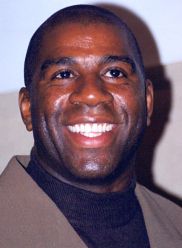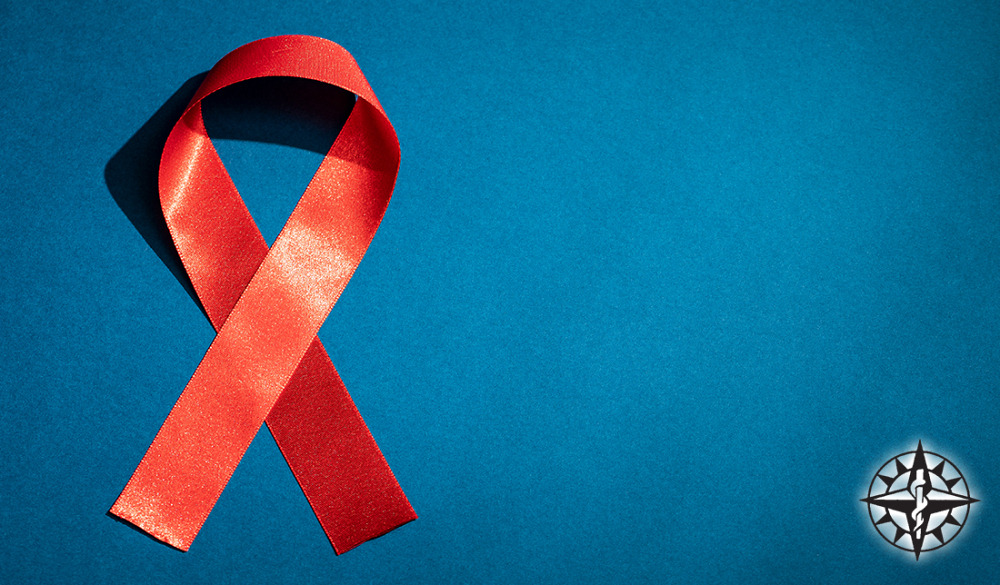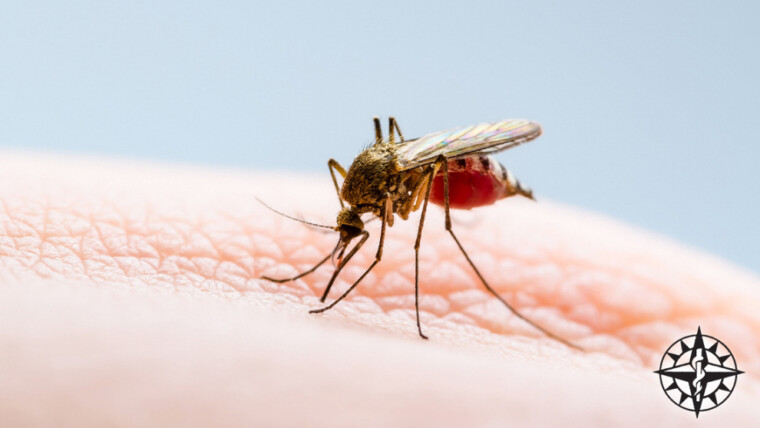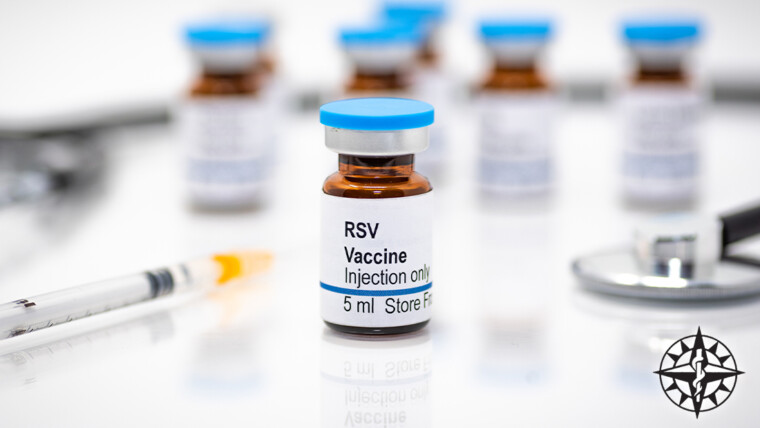Published on: November 9, 2020
 In November of 1991, Los Angeles Lakers point guard, and basketball superstar, Earvin “Magic” Johnson sent shockwaves around the world when we announced that he had contracted HIV, the virus that causes AIDS. He announced that he would be retiring from the NBA, at the height of his decorated career, no less. Because of the information available at that time, the general perception was that he had just announced his death sentence.
In November of 1991, Los Angeles Lakers point guard, and basketball superstar, Earvin “Magic” Johnson sent shockwaves around the world when we announced that he had contracted HIV, the virus that causes AIDS. He announced that he would be retiring from the NBA, at the height of his decorated career, no less. Because of the information available at that time, the general perception was that he had just announced his death sentence.
Very little was known about the disease at that time, and what was known was certainly not good. The death rate was sky-high. The stigma around the virus was incredibly painful. From every angle, both medically and socially, the outlook was incredibly bleak. To add to the public chaos, Freddie Mercury, the front man and lead singer for the worldwide sensation band, Queen, announced that he had contracted HIV, and sadly passed away just one day later from pneumonia related to HIV.
Magic Johnson at the NBA All-Star Game and Barcelona Olympics
 So, the world sat and waited to see how one America’s most famous athletes would fare. And, yet, Magic Johnson survived. He seemed to begin even to thrive. Despite his retirement, Magic was voted by fans to be a starter for the 1992 NBA All-Star Game in Orlando, FL. However, there was some pushback and concerns from some players and past teammates. Johnson led the West to a huge win, even hitting a last-second 3-point shot when players from both teams rushed the court to congratulate Johnson. Magic was crowned the All-Star MVP during this iconic All-Star game. What was going on? Wasn’t he sick?
So, the world sat and waited to see how one America’s most famous athletes would fare. And, yet, Magic Johnson survived. He seemed to begin even to thrive. Despite his retirement, Magic was voted by fans to be a starter for the 1992 NBA All-Star Game in Orlando, FL. However, there was some pushback and concerns from some players and past teammates. Johnson led the West to a huge win, even hitting a last-second 3-point shot when players from both teams rushed the court to congratulate Johnson. Magic was crowned the All-Star MVP during this iconic All-Star game. What was going on? Wasn’t he sick?
But it didn’t stop there. Johnson was one of the players chosen to compete in the Barcelona 1992 Summer Olympics for the U.S. basketball team. This team quickly became known as the “Dream Team” simply because of the NBA stars who made up the team’s roster. The team was unbeatable and took home the gold medal.
From there, Magic would make a comeback as a Laker, both as a player and coach. When he retired for a second time, he made his career as a businessman, philanthropist, sports commentator for NBC Sports and HIV activist. Eventually, he would return to the Lakers as an executive, becoming the president of operations for the team.
How Did Magic Succeed with HIV?
It seemed that everywhere Magic went, he thrived. Everything Magic did seemed to work. He always had a smile on his face and appeared to be in good health; a very different outcome from what so many thought it would be that day in 1991 when he held his press conference announcing he had tested positive for the disease. So, just what was going on?
The fact is that Magic’s story is not unique to just Magic. The key with Johnson and others has been preventing their incurable disease from progressing into full-blown AIDS. And from the 80s and 90s to the present day, tremendous strides have been made in the effort to control this infection. HIV and AIDS began as an epidemic drenched in illness, stigma, fear, and death as the world faced an unknown virus. But with scientific advances, such as the development of antiretroviral drugs, people now have access to treatment, which enables them to live long and healthy lives with HIV. But we know this wasn’t always the case.
Let’s look at the disease in the early years of discovery and treatment.
HIV – The Early Years
In 1981, instances of an infrequent lung infection called Pneumocystis carinii pneumonia (PCP) were discovered in five young gay men in Los Angeles. Around the same time, there were reports of a small group of gay men in New York and California with an aggressive cancer named Kaposi’s Sarcoma. In December 1981, cases of PCP were first reported in people who inject drugs regularly. By the end of the year, 270 reported cases were described as “severe immune deficiency” among gay men. Sadly, 121 of the 270 (nearly half) had died.
In June 1982, while investigating a group of cases among gay men in Southern California, it was suggested that the cause of the immune deficiency was, indeed, sexual. Hence, the syndrome was initially called “Gay-Related Immune Deficiency,” or “GRID. And so, the stigma began. Later in June, the disease was reported in hemophiliacs and Haitians, leading many to believe it had originated in Haiti. In September of the same year, the CDC used the term “AIDS” (Acquired Immune Deficiency Syndrome) for the first time. They described it as “a disease at least moderately predictive of a defect in cell-mediated immunity, occurring in a person with no known cause for diminished resistance to that disease.” AIDS cases were also reported in several European countries in 1982. In Uganda, doctors were reporting cases of a new, fatal wasting disease locally known as ‘slim.’
An Alarming Death Rate
In January of 1983, AIDS was first reported among the female sexual partners of men who had the disease. This discovery suggested it could be passed on via heterosexual sex. By September, the CDC had identified all major transmission routes and ruled out transmission by casual contact, food, water, air, or surfaces. In November, the World Health Organization (WHO) convened for the first time to assess the global AIDS situation and began international surveillance. By the end of 1983, cases in the United States had risen to 3,064. Of this number, a shockingly high 1,292 had died. That is just over 42%. Staggering. It was then that the National Cancer Institute identified HIV as the cause of AIDS.
The number of cases continued to grow as the CDC polished their research, and scientists continued to learn more about the virus. With the continued growth in positive cases, the development of research, treatment, and prevention also grew.
Azidothymidine, also known as zidovudine (AZT), was introduced in 1987 as the first treatment for HIV. Many scientists were focused on the development of therapies to reduce mother-to-child transmission. By the end of 1989, the number of reported AIDS cases in the United States reached 100,000.
HIV – More Recently
By 1995, complications from AIDS were the leading cause of death for adults 25 to 44 years old. About 50,000 Americans died of AIDS-related causes in 1995. Sadly, African Americans made up 49 percent of AIDS-related deaths.
It wasn’t until 1997 that “highly active antiretroviral therapy” (HAART) became the new treatment standard. This therapy alone caused a 47% decline in death rates.
Also, in 1997, The FDA approved Combivir. Combivir combines two drugs into a single tablet, making HIV medications more convenient to take. The Food and Drug Administration (FDA) approved the first rapid HIV diagnostic test kit in November 2002. The test kit allowed hospitals to provide results with 99.6 percent accuracy in 20 minutes.
By 2003, the CDC reported that 40,000 new infections occurred each year. More than half of those transmissions came from people who didn’t know they were infected. It was later discovered the number was closer to 56,300 infections. This number remains roughly the same today since the late 1990s. Also, in 2003 the World Health Organization (WHO) set a public goal to bring treatment to 3 million people by 2005. Researchers continued to create new formulations and combinations to improve treatment outcomes, and by 2010, about 5.25 million people were on treatment, and 1.2 million people would start treatment. At this time, there were up to 20 different treatment options and generic drugs, which helped lower costs for those struggling with the disease.
Pre-exposure Prophylaxis (PrEP)
In July 2012, the FDA approved pre-exposure prophylaxis (PrEP). PrEP is a medication shown to lower the risk of contracting HIV from sexual activity or needle use. The treatment calls for taking the drug daily.
Doctors have recommended PrEP for people who are in a relationship with someone who has HIV. The U.S. Preventive Services Task Force recommends it for all people at increased risk of HIV. PrEP has proven to reduce the risk of HIV infection by greater than 90 percent.
Fast forward to 2017; studies showed that a person living with HIV who is on regular antiretroviral therapy that reduces the virus to undetectable levels in the blood is NOT able to transmit HIV to a partner during sex. The current consensus among medical professionals is that “undetectable = untransmissible.” Currently, death rates in the United States have dropped by 80% since 1995, but there is still no vaccine for HIV.
So, it’s clear that there have been tremendous advancements made in the fight against HIV since the day that Magic Johnson announced his positive diagnosis. What once was as a death sentence is now very realistic for people to live a long and full life with the disease.
Tampa Bay – Bringing HIV Close to Home
While the Southern United States makes up just 38% of the total U.S. population, it is where more than half of all new HIV diagnoses are occurring according to the Centers for Disease Control and Prevention. Florida is home to the metro area with the highest rate of new positive cases in the nation—Miami—where 1 in 1,000 people have HIV, says the CDC. Tampa Bay ranks in the top 25, but Hillsborough and Pinellas counties rank among 48 counties nationwide where half of all new HIV diagnoses occur.
Why? Some think it is due to more young people moving to the area and dating apps to “date” or “hookup” while not as many are using condoms. This theory coupled with older retirees living in senior communities where sexually transmitted diseases may be spread could also explain the increase.
HIV Rates in Hillsborough County and Pinellas County
In Hillsborough County in 2018, 570 of every 100,000 people were living with HIV as were 517 of every 100,000 people in neighboring Pinellas County. Furthermore, among Floridians in their 20s, there was an increase in HIV cases of 20% from 2007 to 2016. And specifically, for those same nine years, there was an increase of 28% in Pinellas and Pasco counties and 23% in Hillsborough County in that age group.
In 2019 more than $490,000 was granted to seven Florida counties as part of a national effort to try to eradicate HIV and AIDS over the next ten years. The funding is made possible as part of the Ending the HIV Epidemic initiative, which was announced by the Trump administration last year.
Experts say that our region has a stigma and inadequate education around the disease. The overall goal of those who are fighting HIV and AIDS in our area is to increase knowledge and make the best treatments available to those who are suffering. For many, the memory of the AIDS epidemic of the 1980s-90s has faded, but today’s epidemic is not just secluded to the gay communities of San Francisco or New York. HIV affects Floridians from many walks of life. Cases are specifically increasing among the young, and remains a significant danger, especially to immigrants, drug users, and the homeless. Black and Hispanic communities are disproportionately affected. Latinos accounted for 34 percent of the new HIV diagnoses in Florida in 2018.
HIV Testing and Prevention
The best method to protect yourself or others from HIV is always to be aware of the risk and behave accordingly. If you believe that you are at risk for contracting HIV, then get regular HIV testing. If you are sexually active, then get tested for HIV at least once per year, and following any sexual encounters with a new partner. Use condoms or dental dams when engaging in sexual intercourse and avoid contact with the blood or bodily fluids of someone whose HIV status is unknown. If your sexual activity is high risk or your partner is HIV +, then consider asking your doctor about PrEP to help protect yourself.
A significant component of stopping the spread of HIV is openness and honesty. If individuals with HIV are afraid of being shunned by their communities for their diagnosis, then they may never seek treatment or even wish to get tested out of fear.
HIV Clinic Tampa
 With over 30 years of HIV / AIDS treatment experience and an in-house lab, Infectious Disease Associates of Tampa Bay (IDATB) proudly serves the Tampa HIV community. We have the resources and knowledge to best treat HIV / AIDS patients at our premier HIV clinic in Tampa. We have physicians who are available twenty-four hours a day to provide care for the Tampa Bay HIV / AIDS community. IDATB in association with BayCare also cares for those with HIV at our Tampa Care and Pinellas Care Clinics where even uninsured patients have access to medical care and medications through state and federal programs and grants. IDATB also participates in cutting edge research that makes new and innovative treatments available through clinical trials.
With over 30 years of HIV / AIDS treatment experience and an in-house lab, Infectious Disease Associates of Tampa Bay (IDATB) proudly serves the Tampa HIV community. We have the resources and knowledge to best treat HIV / AIDS patients at our premier HIV clinic in Tampa. We have physicians who are available twenty-four hours a day to provide care for the Tampa Bay HIV / AIDS community. IDATB in association with BayCare also cares for those with HIV at our Tampa Care and Pinellas Care Clinics where even uninsured patients have access to medical care and medications through state and federal programs and grants. IDATB also participates in cutting edge research that makes new and innovative treatments available through clinical trials.
If you believe you are at risk for contracting HIV, are HIV-positive, in need of an HIV test, or need someone to talk to about your concerns, do not hesitate to call (813) 251-8444. We also encourage prospective patients to review our services at https://idatb.com/services/. With multiple clinics in the Tampa metro area, we are certain that we have an HIV clinic near you. It is our privilege to care for you!





